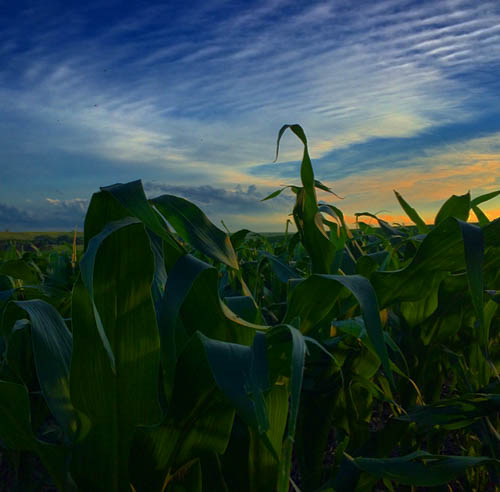Farmland Values and Stocks: What’s the 2016 Forecast?

We’ve written a lot about land values—their steady rise over the last decade, their leveling off in 2014-15, and their continued substantial portfolio value to farmers and non-farmers alike. With lower commodities prices, combined with an interest rate increase and more likely to come, will farmland values continue to be a sought after asset? What do experts forecast for land values in 2016?
It’s not news to stockholders that 2016 is off to a poor start: It was the Dow’s worst five-day start to a year on record, according to Dow Jones. Individual stock holders are worried about the trend, even though experts caution stockholders not to panic. Another tip they’re offering: Diversify in real estate.
This means that farmland may continue to be an attractive alternative to stocks for those looking to revive their stock portfolios. While farmers and big outside investors are still eager to buy land, they are also being more realistic in the timing of their purchase, especially with continued lower commodity prices. While the small interest rate increase announced in December—the first of several projected increases to come over the next 5 years—will likely have an impact on land values, economists believe that investors will continue to look to land as a stable long term investment, despite various downward pressures.
In the longer term, continued world demand for water, food, fuel and fiber will determine commodity prices which will affect future land values. Most economists agree that, as long as the supply of land for sale remains low and demand continues to be present, land values will be supported.
In this way, those worried about a market bubble burst, such as the five year long burst in the 1980s, may allay their fears.
Delving further into this theory are Gary Schnitkey, Bruce Sherrick, and Todd Keuthe of the University of Illinois Ag Economics department. In a recent 2016 Farmland Price Outlook report, they looked at capitalized values of farmland, where capitalized value represents the “discounted sum of future cash flows, capturing the impacts of both farmland returns and interest rates on farmland price.”
They found that while there will continue to be downward pressure on farmland values in the coming year, the capitalized values do not suggest that current prices are in a bubble condition.
“Stated alternatively,” they conclude, “capitalized values relative to farmland prices do not point to a situation like the 1980s in which the driving forces of farmland prices directly suggesting farmland prices were above their fundamental values.”
In the meantime, farmers and landowners still face challenges, operating under tight profit margins and lower farm income.
Sources consulted: Gustke, Constance. “Farm to Market: Taking Stock of the Agricultural Land Grab.” CNBC.com. CNBC. 21 Jan. 2016. Web. 11 Feb. 2016. Schnitkey, Gary, Bruce Sherrick, and Todd Keuthe. “2016 Farm Price Outlook.” FarmDocDaily. University of Illinois. 20 Oct. 2015. Web. 11 Feb. 2016.

